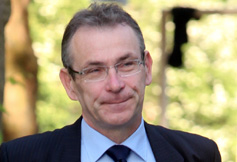Gearing up for the future: Development Commissioner Andris Piebalgs visits South Sudan

From 12th to 14th May, Development Commissioner Andris Piebalgs will visit the Republic of Sudan, including South Sudan. This is the first official visit by a European Commissioner since the referendum took place last January. Commissioner Piebalgs will underline that the Commission stands ready to do all it can to support the new country of South Sudan when it gains independence on 9 July. On 12 May Commissioner will be in Khartoum and will meet government representatives. During his visit to South Sudan (13th and 14th May), Commissioner Piebalgs will give a public speech in Juba where he is expected to emphasize the fact that Sudan is one of the EU's highest priorities in Africa, and confirm the EU's commitment to doing all it can to enable South Sudan to have a new start on the international stage following its expected independence in two months' time.
Commissioner Andris Piebalgs said today: "I want to assure you that the European Union stands ready to support the country and people of South Sudan at this critical juncture. We are committed to doing all we can to help the country's poorest people so that they are able to look to a more optimistic future when it begins work on 9 July."
During the visit, Commissioner Piebalgs is scheduled to meet the Sudanese Vice-President, Ali Osman Taha, and South Sudanese President, Salva Kiir Mayarditt, as well as other representatives of both governments and from the international donor community.
Commissioner Piebalgs is also expected to say that private sector investment will be crucial in helping to boost South Sudan's economy and get the country on the road to economic growth. After independence, South Sudan will be one of the world's poorest and least developed countries, with one of the highest infant-mortality rates and the lowest education indicators in the world.
In South Sudan, he will visit a European Union-funded project in Juba, which helps to target food insecurity in the area by providing training and expertise, for example in areas like crop forecasting, as well as raising awareness of the issue amongst stakeholders.
South Sudan took part in a self-determination referendum in January this year. Voters opted overwhelmingly - over 98 percent - for South Sudan to become an independent country.
BACKGROUND
Decades of civil war have left South Sudan extremely poor, with numerous humanitarian and socio-economic challenges to cope with in the context of limited governance capacity and political fragility. One child in ten still dies before its first birthday and less than only one percent of girls complete primary education.
The situation in large areas of South Sudan and the border regions with North Sudan remains complex, with persistent violent conflicts and frequent incidents of serious fighting. This leads to large scale displacement of the population, as well as leaving people vulnerable to food insecurity, outbreaks of diseases and natural disasters, and unable to access to the most basic services such as healthcare or safe drinking water in many areas.
After 15 years of suspension, following the signature of the Comprehensive Peace Agreement (CPA) between North and South Sudan in January 2005, the European Commission was able to resume cooperation with Sudan. Since then the EU has committed development assistance of over €665 million to Sudan with more than 45% dedicated to South Sudan. This assistance is addressing post-conflict recovery, rehabilitation and development activities. However, the Government of Sudan decided not to ratify the revised Cotonou Agreement, thereby losing access to the 10th European Development Fund (EDF); which envisaged a total allocation of €294.9 million.
Sudan is the EU's largest beneficiary country for humanitarian aid, with €131 million from the 2010 EU budget. This aid is additional to development aid and covers operations in Darfur, South Sudan and the Transitional Areas.















